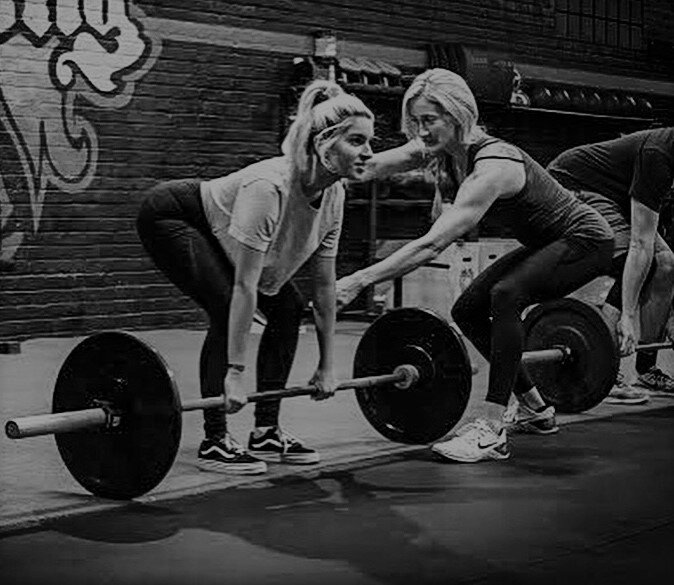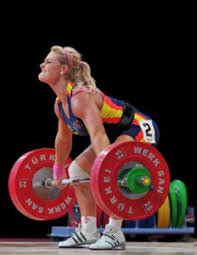Pick through Obstacle Course Racing groups and forums on social media and your bound to see the question:
“Is CrossFit a good training method for Obstacle Course Racing?”
As a level 2 CrossFit coach and previous affiliate owner, some may consider my view on this topic biased. But I assure you it is not. I’ve purposefully obtained a diverse portfolio of certifications to better understand what’s out there and minimize a one-track minded training methodology.
Yes. I do believe CrossFit can have benefits for those who participate in OCR. It has the capability to increase your aerobic capacity, make you stronger, faster and more efficient. BUT you should finish reading this in its entirety to understand how you can lessen the chance for injury, which is an echoing concern for those who are new to CrossFit.
Let’s first start with understanding WHAT it is. CrossFit, by definition is:
“Functional Movement, Constantly Varied Performed at High Intensity.”
Functional movements are movement patterns that we all use. Ie: squat, lunge, push, pull, hinge, twist, and walk. Whether it’s a deadlift at the gym or picking up your clothes basket at home, we all perform these throughout our day at some capacity. So there really isn’t anything about the movement patterns that vary from what you’re already doing. (minus the Olympic lifts)
The modes, however, may be new territory.
During your programmed CrossFit workouts: (programming will vary from gym to gym), you can expect to perform the following:
Bodyweight movements, (no load) such as the air- squat, push-up, pull-up and some pretty wicked gymnastic movements (handstand push-ups, handstand walks, ring muscle ups etc. Don’t worry, there are modifications to ALL of these to build your foundation and get you on a safe pathway to movement completion.
The functional movement patterns mentioned above WITH an added load:
o examples of possible loads are kettlebells, barbells, dumbbells and sandbags.
Mono-structural exercises, including:
o cycling, rowing, ski erg, swimming, and running.
Annnnnd then there are the Olympic lifts. The Clean/Clean and Jerk and the Snatch. Both of which are an incredible demonstration of physics combined with extreme athleticism. These movements are in the Olympics for a reason. They are performed with an insurmountable amount of precision and should be EARNED by anyone who steps foot into a CrossFit facility. I do want to note…the previous is in reference to the full squat snatch/squat clean. The power snatch and power clean are movements that are caught above parallel (the power position) and are far more attainable with fewer mobility/strength requirements.
Not familiar with the clean/jerk or snatch? Take a look at the videos below and then come back. They are slow-mo video examples, performed by Chad Vaughn. He has wickedly good mechanics. Warning…you may end up watching more than once.
Coaches tip: If you are planning on doing CrossFit, you will be introduced to these at some point in time. Here’s a simple rule to follow to help avoid unnecessary injury…
If you cannot control the start or end position with a solid amount of control, DON’T think that you can throw it all together safely. Cause you can’t. It’s not the safest approach. Make sure you have the following under control before attempting to perform a full clean or snatch.
For the Snatch:
A controlled slow snatch grip lift off from the floor to the knee. “The 1st pull”. The barbell should be controlled back to the floor as well.
A controlled overhead squat with a SOLID bottom position.
For the Clean:
A controlled slow clean grip, “The 1st pull”, from the floor to the knee. The barbell should be controlled back to the floor as well.
A controlled Front Squat with a solid bottom position.
I won’t dive to much further into this (it can be a rabbit hole) but that’s a good starting point...
In conclusion, YES, CrossFit can be beneficial for participating in an obstacle course race. But…to lessen the chance of injury…
-DO NOT settle for a coach that doesn’t understand safety and progression. Do your due diligence to research your potential coaches.
-Be comfortable with not knowing how to do something. Who cares! That’s what your coach is for. You will become 1% better each day and that’s what matters.
-Don’t attempt shit that you’re not comfortable with! It’s your body and you only get one!
If you are interested in learning how to correctly perform the foundational movements listed in this blog, you can do so by taking the “Functional Movement Foundations Program” where I take you through via online modules how to safely and effectively prepare and perform each of the following: Deadlift, Air Squat, Front Squat, Back Squat, OH Squat, Core Stability/bracing techniques and proper foot engagement.
Whether you’ve been working out for ten days or ten years, you will learn many great tools that are applicable to understanding proper movement patterns that you will use at the gym, on the job and at home. I highly recommended for everyone to go through a program like this so that your building a solid foundation for the future.
For more information, please contact me directly: Sarah@ocrtraining.com
Sarah Pozdol
Founder; OCRTraining.com
NASM; CPT. YES.
Spartan SGX, SOS.
CrossFit L2, Gymnastics
POSE Run Method
Mobility WOD 101/102, Performance Specialist










